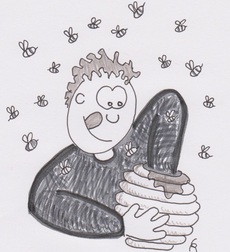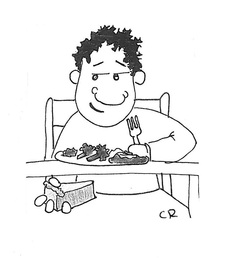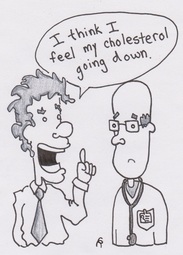
The October issue of Today’s Dietitian reported that we Americans eat 153 pound of sugar a year. That’s about 30 teaspoons per day.
“How could that be?” You say, munching on the last of the Halloween candy. I don’t add 30 teaspoons of sugar to my food everyday.”
You don’t have to. We’ve all heard about High Fructose Corn Syrup, HFCS. Sometimes we even try to avoid it. But what is it anyway?
Well, first of all, it’s not actually pure fructose (the sugar found in fruits) It’s about 50/50 fructose and glucose. The composition is similar to table sugar. So what’s the problem with that?
Experts will tell us we are consuming a lot of empty calories. That is calories without nutrition. Do we they agree that that is the problem?
Not exactly.
The Dietary Guidelines for Americans, the ones that brought us the plate that replaced the pyramid, report that added sugars offer little nutritional payback. However, their guidelines state that foods with added sugars are no more likely to contribute to weight gain than any other source of calories in an eating pattern that’s within calorie limits.
Calories. Remember those? The word is derived from the French word for heat. It used to measure the energy value of food. The truth is that our foods now have more calories. HFCS in our foods has increased by more than 1000% between 1970 and 1990, and that means more calories in. It’s dangerous, because we humans like the taste of sweet, and it’s way more available than when we used to have to battle bees for it. And when so many foods have sweeteners, we may not even taste the difference. Unless we read the labels, we don’t even know they’re there.
So, if we just cut out all sugar, would we all be lean and mean?
Kelly Brown, PhD, a professor at Yale University and director of the Yale Rudd Center for Food Policy & Obesity says that “…sugar is an important culprit in the obesity problem, but it’s not the only one. Sugar is important for several reasons: It’s added to the diet in large amounts; it makes things more palatable so that it pushes people to over consume it; and it’s a major source of calories, especially from sugars added to beverages.” Now, I’m picturing one of those gigantic sodas that doesn’t fit into your car’s cup container.
A lot of what we do is based on what we believe. So what do we believe.
The Food Information Council Foundation 2012 Food & Health Survey revealed consumers’ attitudes about sugar and health. Of those surveyed.
- 20% believe that calories for sugars are responsible for weight gain.
- 62% believed a moderate amount can be part of a healthful diet.
- 61% said it’s not necessary to completely eliminate sugar to lose weight.
- Only 28% believed all sugars are similar and used by the body in the same way.
- 51% are trying to avoid sugars when choosing foods and beverages.
- 35% pay not attention to sugar content.
A number of years ago I was working as an inpatient diabetes educator. The patients I saw had been admitted because they were already having some complication from their diabetes, frequently infections. Many were learning for the first time that they had the disease. As hospital stays are often short, I often had only one or two chances to have an impact before the person went home. (Remember 90% of health care decisions take place out of the influence of medical providers.)
Before I counseled someone, I needed to know about their lifestyle, their habits, so I listened more than I talked. As I said goodbye, I’d say, “I hope I never see you again.” Meaning, I hope you do what you need to do to stay well. “But if I do, we’ll just go over this again.”
One person comes to mind, as I write this. A very overweight man in his mid-twenties, who I did see again. The second time, he was a visitor sitting at his mother’s bedside. She now had diabetes, and the doctor had written an order for me to see her.
When I walked in, I noticed that the room was strewn with fast food wrappers and soda cups. I introduced myself to the patient and then to the family. Then I saw him.
“I know you,” I said to her son. “Weren’t you here a few months ago?”
I often say that I have eyes trained to notice weight loss. I can see a five or ten pound difference. This guy had lost weight – a lot. But how? He was clearly still eating fast food. He hadn’t obviously taken everything I’d said to heart. But he was thinner, significantly.
“You look great,” I said, even though he had a ways to go. Progress is progress.
“Yes,” he said. “I’ve been losing weight.
I looked at the bag and the huge soda next to him. “How?” I asked.
“Well, I still don’t do everything I’m supposed to, but I did change one thing.”
The magic bullet? The thing that everyone has been looking for?
“Tell me,” I said.
He took a sip of his soda, “I don’t drink regular sodas anymore. I switched to diet.”
“That’s all?” I asked.
“That’s all,” he answered.


 RSS Feed
RSS Feed
